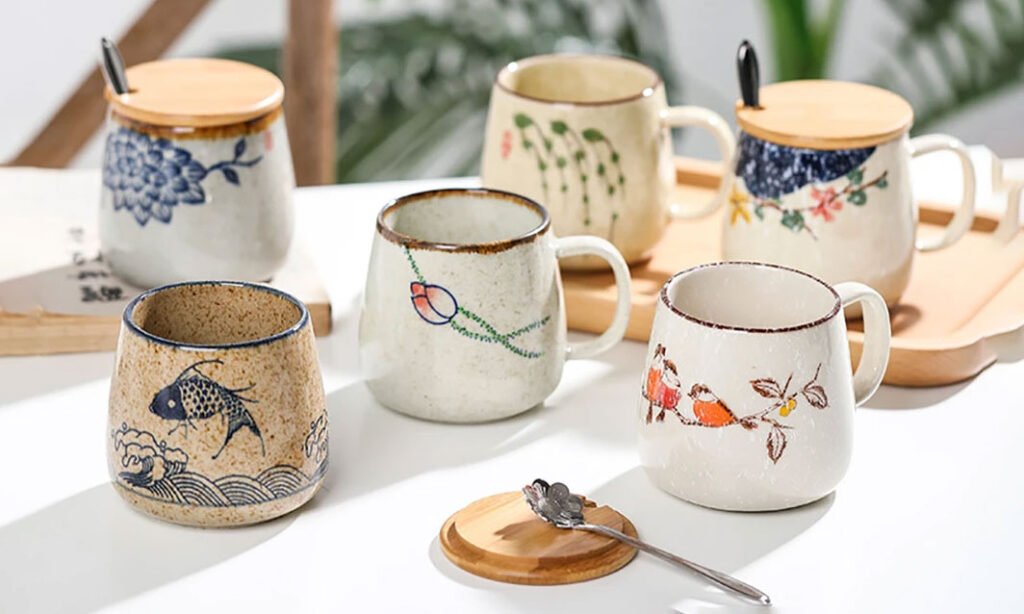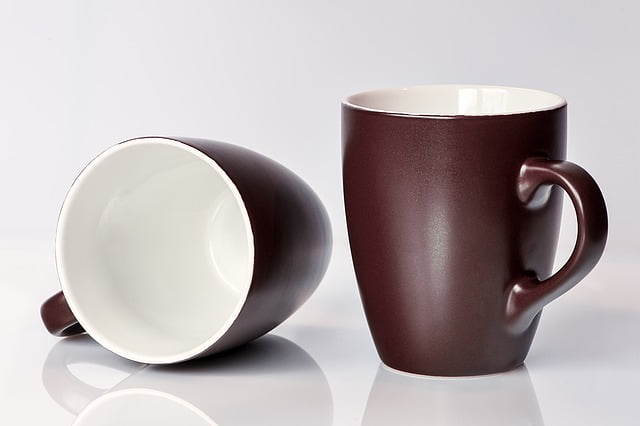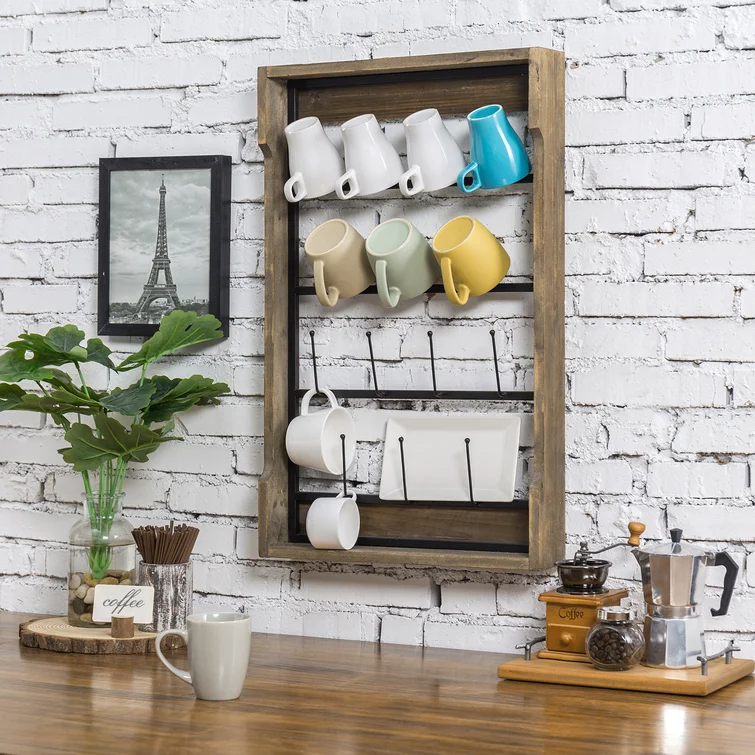I. Introduction
Cups and mugs are fundamental vessels used to hold and consume beverages. They serve a simple yet indispensable purpose in our lives. Cups, traditionally open-top containers, and mugs, often with handles, have been an integral part of human existence for centuries. These vessels are not just about quenching thirst; they symbolize cultures, traditions, and rituals across diverse societies.
Understanding Cups and Mugs: Cups and mugs come in various shapes, sizes, and materials. They range from delicate porcelain tea cups to sturdy and practical ceramic mugs. These vessels are designed not only for holding liquids but also for storing solids, making them versatile tools in culinary arts and everyday life. Often made from glass, metal, china, clay, wood, or plastic, these containers have evolved to suit different purposes and occasions.
Historical Significance: The historical relevance of cups spans civilizations and epochs. Cups have been discovered at archaeological sites worldwide, revealing their presence since prehistoric times. They have been an essential part of human culture, used in monarchies, religious ceremonies, cuisine, sports, and games. From ancient Mesopotamia to the Roman Empire and beyond, cups have left an indelible mark on humanity’s timeline.
Table of Contents
II. Evolution of Cups: From Ancient Origins to Modern Times
Archaeological Discoveries: The discovery of cups in archaeological findings, dating back several millennia, showcases the enduring presence of these vessels throughout human history. Prehistoric cups made from shells, stones, ceramics, and metals reflect the earliest efforts of our ancestors to create vessels for holding liquids.
Cups in Ancient Civilizations: Civilizations like those in ancient Mesopotamia, the Roman Empire, England, and the Americas had their unique cup-making practices. Cups were used for diverse purposes, including transporting and consuming beverages, exhibiting the cultural significance of these vessels across regions.
Notable Historical Cups: Some cups have gained legendary status due to their historical significance. Examples like the Rillaton Gold Cup and Native American Horse conch cups stand as testaments to the craftsmanship and cultural significance of cups throughout ancient times.

III. Goblets, Chalices, and Traditional Drinkware
Medieval Drinkware: During medieval times, goblets emerged as prevalent drinkware. These ornate cups often had stands and were traditionally crafted from metals. Goblets, with their regal appearance, were commonly used in various settings, from grand banquets to everyday dining.
Chalices in Rituals: Chalices hold particular importance, especially in early Christian rituals. Originating from the Roman Catholic Church, chalices were utilized during Holy Communions to carry Communion Wine. These ornate vessels, often made from precious metals adorned with enamels and jewels, were designed primarily for ceremonial purposes, signifying reverence and sanctity.
Precious Metal Goblets: Goblets made of gold, silver, or other precious metals were symbolic of wealth and stature. They were treasured possessions that adorned the tables of nobility, reflecting social status and power during historical periods.
IV. The Emergence and Transformation of Mugs
Pre-Metallic Mug Era: Before the advent of metalworking, ancient civilizations fashioned mugs from various materials such as clay, wood, and even skulls. These early iterations of mugs served their purpose but were less efficient, especially for hot beverages, lacking the insulating properties found in modern designs.
The Porcelain Revolution: Around 600 A.D. in China, the invention of porcelain revolutionized mug design. Porcelain’s delicate yet durable nature allowed the creation of thin-walled mugs. These finer mugs were excellent for insulating hot liquids, gradually replacing older mug versions made from less thermally effective materials.
Transition to Modern Designs: The evolution of mugs continued over time. From early iterations with handles on the side, akin to contemporary coffee mugs, to the development of thin-walled designs post-porcelain invention, modern mugs gradually took shape. The design transition enhanced their functionality, making them more suitable for everyday use, especially for enjoying hot beverages.

V. Diverse Types of Cups: Tea Cups, Quaichs, and More
Tea Cups and Their Origin: Tea cups, akin to coffee cups but designed for tea, are small cups with handles, primarily crafted using ceramic materials like porcelain. Originating in China around the 10th century B.C., these cups were initially handleless and evolved into their European counterparts, often part of entire tea sets.
The Unique Quaich: The Quaich, a fascinating cup with Scottish origins, stands out due to its distinctive double-handled, shallow design. Traditionally made from wood in the Highlands, it gained popularity in locations like Edinburgh and Glasgow when mounted with silver. The Quaich symbolizes friendship, loyalty, and unity.
Unconventional Cups: Beyond conventional designs, there exist unusual cups like the Pythagorean cup, designed not just for drinking but as a tool to moderate drink intake. The cup’s innovative mechanism prevented excessive drinking, reflecting ancient attempts to enforce moderation.
VI. Cultural Significance and Broad Usage
Cups in Monarchy and Prevention of Poisonings: Throughout history, cups played a crucial role in monarchies. Monarchs, wary of potential poisoning, used dedicated cups and assigned cup-bearers to guard them. Some cups, like divining cups, were believed to detect poison, reflecting the fear of poisonings in royal circles.
Religious Significance in Rituals: Religion often employs cups in various rituals. In Christian Communion, adherents drink from a cup of wine to commemorate Jesus’ Last Supper. Ancient Greek practices included libations, and cups like the rhyton were utilized for such rituals.
Diverse Role in Everyday Life: Apart from ceremonial and religious purposes, cups serve multifaceted roles. They are integral in cuisine, measurement (like measuring cups), heraldry (as seen in chalices), child development (transitioning from bottles), and sports (as trophies). Additionally, cups have been featured in games and Tarot divination, reflecting their varied usage in human activities.

VII. Types of Cups and Their Diversity
1. Cups for Hot Beverages:
- Tea Cups: Specifically designed for serving tea, these cups, often made from porcelain, feature smaller sizes compared to coffee mugs.
- Coffee Cups: Specifically tailored for coffee consumption, these cups often have larger capacities and are available in various materials like porcelain or ceramic.
- Mugs: Generally larger and thicker-walled, these sturdy cups are ideal for holding hot beverages like coffee, tea, or hot chocolate. They often come with handles for easy gripping.
2. Cups for Alcoholic Drinks:
- Wine Glasses: Designed with various shapes and sizes depending on the wine type, these cups enhance the tasting experience by allowing the aromas to be savored.
- Beer Steins and Pint Glasses: Different beer styles often have dedicated cups that complement the flavors and enhance the drinking experience.
- Shot Glasses: Small cups designed for consuming shots of distilled spirits.
3. Measurement, Suction, and Breast Cups:
- Measuring Cups: Used in cooking for precise measurement of liquid or dry ingredients, these cups come in various sizes and are often made of plastic or glass.
- Suction Cups: Cups with vacuum or suction mechanisms used for adhering to surfaces.
- Bra Cups: Cups in bras designed to support and cover breasts.
4. Disposable Cups:
- Paper Cups: Commonly used in fast-food restaurants or for serving hot beverages on-the-go.
- Plastic Cups: Often used for parties, picnics, and institutional purposes due to their convenience and ease of disposal.
- Foam Cups: Known for their insulation properties, these cups are suitable for both hot and cold beverages.
Types of Cups and Mugs
| Name | Short Information |
|---|---|
| Tea Cups | Sturdy, thick-walled cups with larger capacities, are ideal for holding hot beverages like coffee or tea. |
| Coffee Cups | Larger cups specifically tailored for coffee consumption, available in various materials like ceramic. |
| Mugs | They are designed with varying shapes and sizes to enhance wine tasting by allowing the aroma to be savored. |
| Wine Glasses | Small cups are used for consuming shots of distilled spirits or small servings of alcoholic beverages. |
| Beer Steins | Cups designed for beer, each style having its specific cup to complement the flavors and drinking style. |
| Shot Glasses | Kitchen utensils are used for precise measurement of liquid or dry ingredients, available in various sizes. |
| Measuring Cups | Cups are designed with vacuum mechanisms for sticking to surfaces. |
| Suction Cups | Cups designed with vacuum mechanisms for sticking to surfaces. |
| Paper Cups | Cups are designed for beer, each style having its specific cup to complement the flavors and drinking style. |
| Plastic Cups | Widely used for parties, picnics, and institutional purposes due to their convenience and disposability. |
| Foam Cups | Known for insulation, suitable for both hot and cold beverages, often used in events or fast-food chains. |
VIII. Conclusion
The journey through the history and evolution of cups and mugs sheds light on their remarkable significance across civilizations.
Evolution of Cups: From pre-metallic cups made of shells and stones to the refined designs post-porcelain invention, cups have evolved dynamically.
Cultural Significance: Cups hold diverse roles, serving in monarchies, religions, cuisine, child development, and games. They have symbolic meanings and practical utilities in various spheres of human life.
Diverse Range of Cup Varieties: Teacups, wine glasses, mugs, and even disposable cups have their unique purposes and cultural connections. Their evolution and prevalence across different cultures showcase their adaptability and universal relevance.
In conclusion, cups and mugs stand as enduring vessels, encompassing practical functionality, historical symbolism, and cultural significance throughout the annals of human history. Their variety and utility remain testament to their enduring importance in everyday life across cultures and eras.

